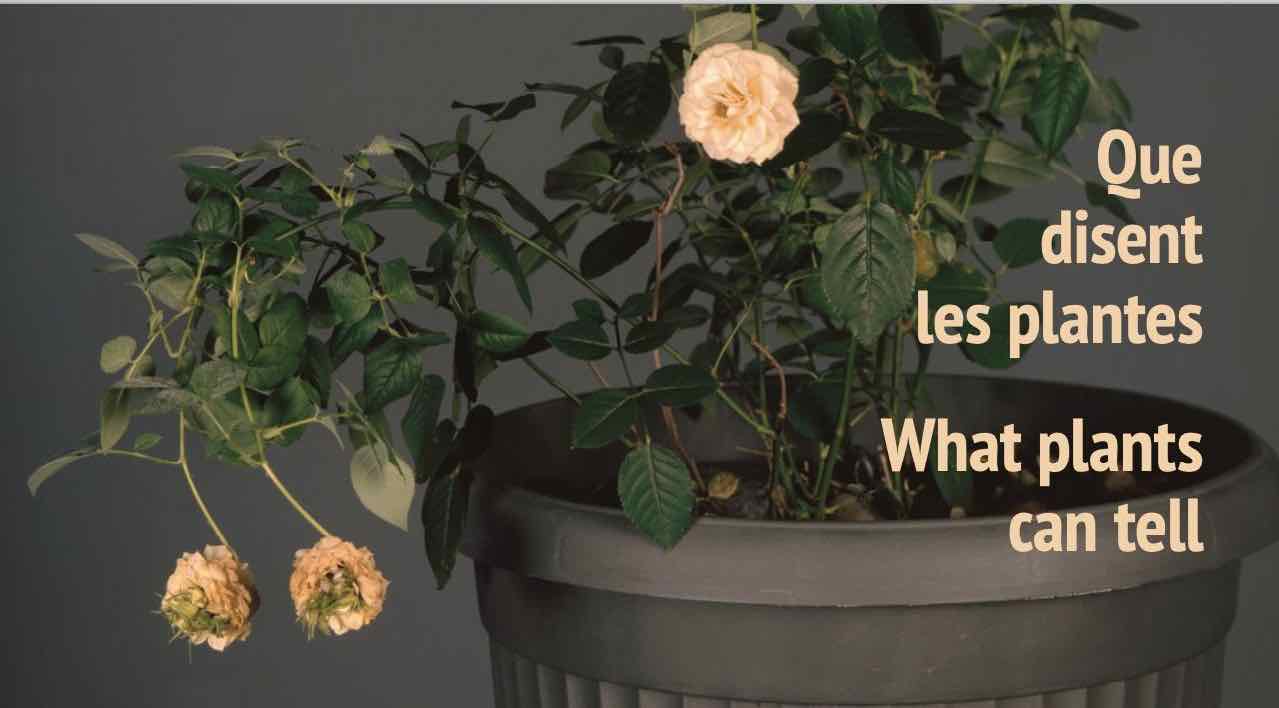What Plants Can Tell , with artists Evergon and Jean-Jacques Ringuette of Chromogenic Curmudgeons (Montréal), Joscelyn Gardner (London, Ontario), Catherine Lescarbeau (Gatineau), Marie-Eve Martel (Blainville), Émilie Payeur (Montréal), Amélie Proulx (Lévis), and Laura St.Pierre (Saskatoon), presented at the Stewart-Hall Art Gallery, from December 7, 2019 to Januaray 19, 2020.
Human activity is closely connected to the activity of plants, on which we rely for both utilitarian and symbolic purposes – as is apparent during family events or official ceremonies.
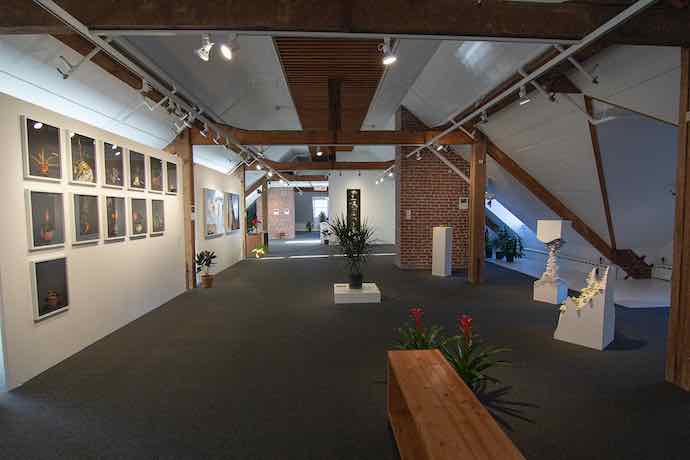
“Say it with flowers”, a phrase that explicitly refers to the eloquence of plants, is used by writers and advertisers because of its evocative quality. In this exhibition, artists explore the meanings (both explicit and tacit) associated with flowers and plants, sometimes through references to vanitas or botany.
Flemish vanitas paintings of the 17th century used flowers to illustrate the transient nature of life on earth and praise the spiritual life. In today’s totally different context, we see a resurgence of interest in this theme – though stripped of its religious connotations – on the part of artists such as the Chromogenic Curmudgeons and Amélie Proulx.
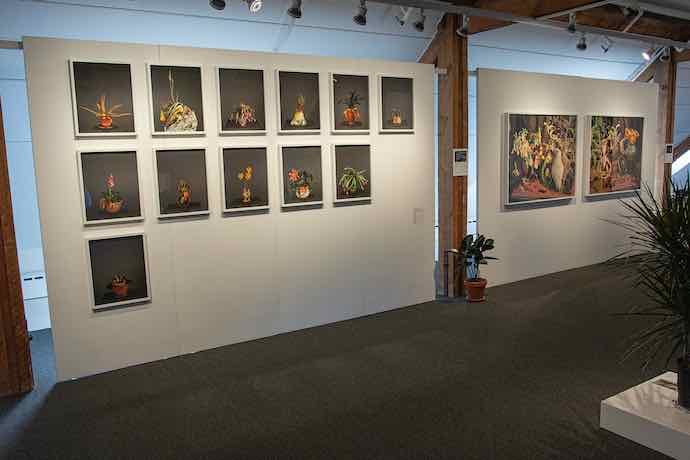
The Chromogenic Curmudgeons drown references to botany in a visual exuberance that is exacerbated by photography, with its ability to transpose everything into images. Automnal 2017, a diptych presented in the exhibition, is an example. Nearby photographs of isolated plants look like cases of mistaken identity created by the plants’ specific qualities, the general composition of the images, and the style of the objects on display, as well as titles, which are often familiar, evoking art history, mass culture, or comic strips. The general makeup of images, plants specific qualities and the style of objects alongside, adds to the allusive nature of the titles, their cross-purposes, double meanings and ambiguities revealing the infinite ability of plants to say something.
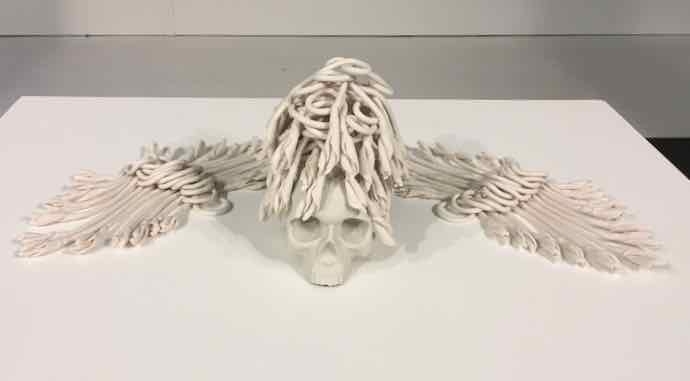
In Métaphores mortes (2016), Amélie Proulx shapes flowers and plants out of clay, making them into bouquets that are then fired as is. Porcelain softens when subject to extreme heat: thus, the process of making that is specific to the artisan’s craft contributes to the final composition. Her recent works borrow from the vanitas tradition, using matter to immortalize the manual work involved in shaping and the tradition of floral ornamentation often present in ceramic tableware. Unlike the traditional vanitas that alluded to the transient nature of time, Proulx’s work embodies a tribute to ceramics, to the dynamic process of firing, to the delicate hand work involved in shaping, and to this art’s singular historic contribution as a means of expression.
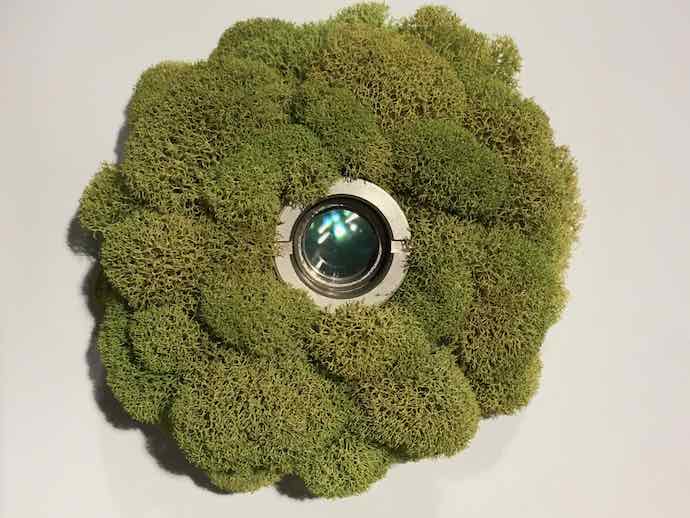
With her Hétérotrophies series, Marie-Eve Martel explores the relationship between human constructions and the plant kingdom. Taking up the figure of the plinth used to display works in art galleries, she shows it covered in delicate handmade mushrooms. The resulting sculptures are ambiguous in that it is not clear which of the two forms is a parasite on the other – hence the title referring to a phenomenon of heterogeneous growth. Martel redefines the relationship between the built and the living, going beyond their autonomy and their mutual exclusion, and pleads for a more balanced relationship between the human realm and the plant realm – or perhaps even between the artificial and the natural.
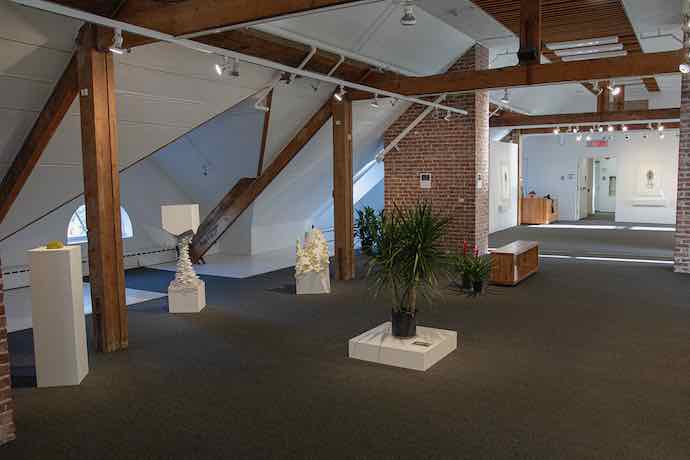
Artists Joscelyn Gardner, Catherine Lescarbeau and Laura St.Pierre appropriate the images and methods of botany to make plants speak eloquently to the benefit of scientific knowledge.

In her Creole Portraits III series, Joscelyn Gardner plays on the aesthetics of botanical illustrations, which she presents as prints – a medium that has already ensured their wide distribution. She combines faithful reproductions of exotic plants from Africa, Central America, and the Caribbean with representations of African women’s hairdos, as well as instruments of torture and restraint used against slaves. In this way, her images tell of the exchanges between Europe, Africa, and the Caribbean as part of the colonial triangular trade. The choice of coffee, quinine and cassava illustrates the power relations involved and the still present legacy of that era. The names of slaves, included in the works’ titles, are a tribute to the victims of this violent economic system.
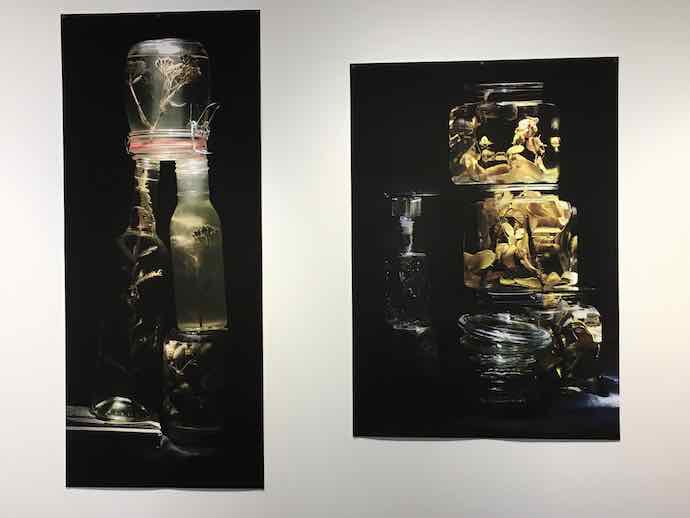
Laura St.Pierre collects plants that she preserves in alcohol as botanists do – a process that maintains their shape, but changes their colour. Using jars and bottles that are commercially available or that were once used to preserve foodstuffs, she reveals the household economy versus the economy of industrial production. She immortalizes these arrangements in large photographs that use light and scaling up to make plants look like spectres, foreshadowing their disappearance as a result of changes now affecting the land. The plants of the St. Lawrence Valley represented in these works are neither rare nor unusual, but might become so one day, and collecting them could preserve them from extinction in some future museum.
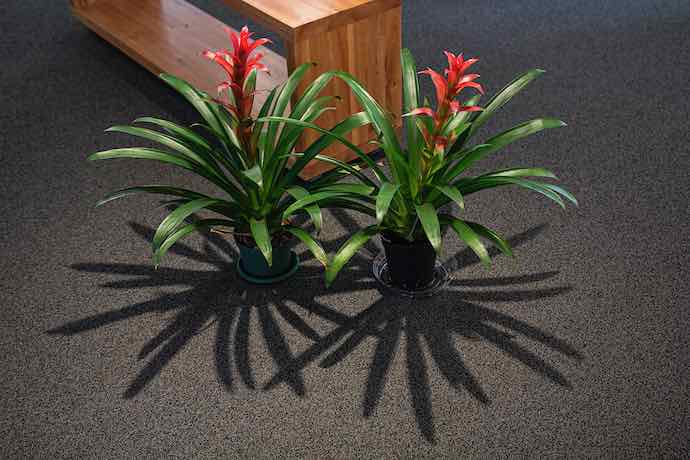
Catherine Lescarbeau has examined Stewart Hall archives to understand the successive occupancies of this historic house, a former upper-class residence that is now home to the Cultural Centre. She notes the continuous presence of plants in the solarium, and in the living room of times past, and as part of exhibitions in the art gallery. Working with a botanist, she characterizes these environments, using scientific fieldwork methods to formally identify the various specimens they contain. Her approach reveals the singular relations with nature that are expressed in domestic and institutional spaces.
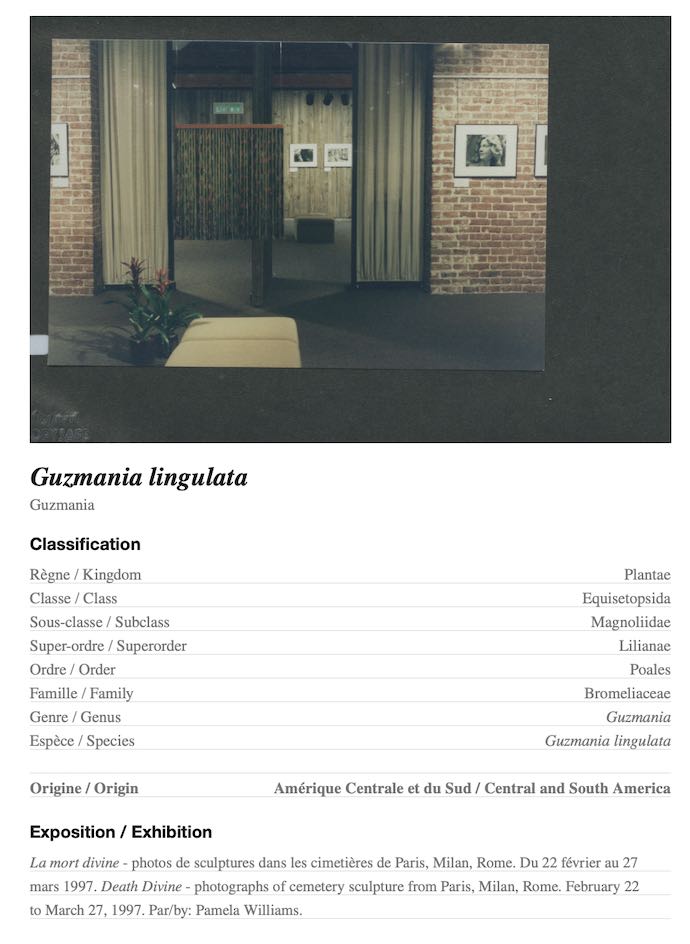
As a child, Émilie Payeur believed that birdsong came from trees rather than creatures perched in them. Today, as an artist active in the experimental music scene, she uses technology to revisit her memories. Sensors hidden in a wooden structure resembling a birdhouse trigger devices creating sound distortions imitating birdson. In this work literally based on the language of plants, digital technology makes it possible to compose an “interspecies” music reflecting the artist’s initial experience of the phenomenon.
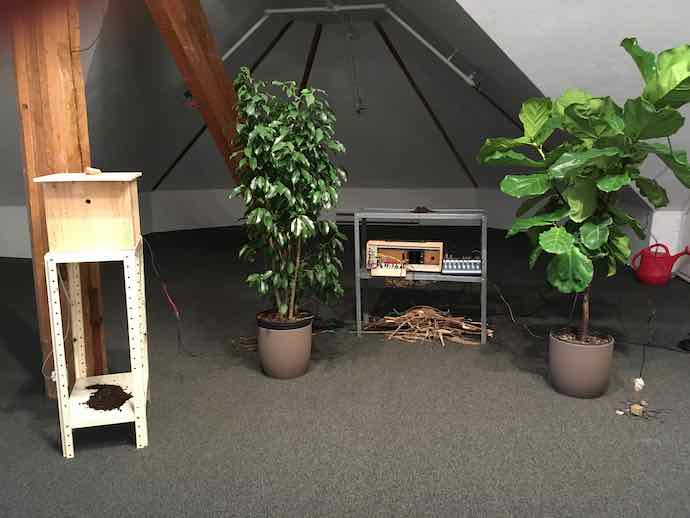
In a context of growing environmental concerns, more and more artists are looking at our relations with the plant world to express deeply human realities related to ecology, power relations, and a variety of aesthetic issues. All things considered, the exhibition What plants Can Tell only gives a glimpse into the many facets of the plant world when this one is placed in the hand of artists.
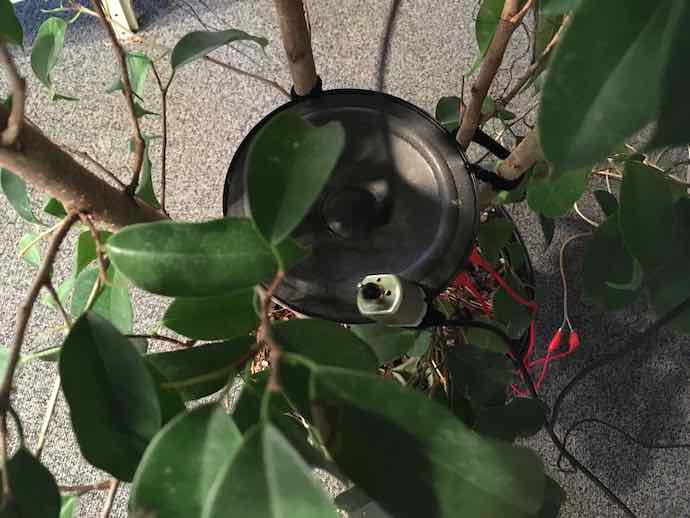
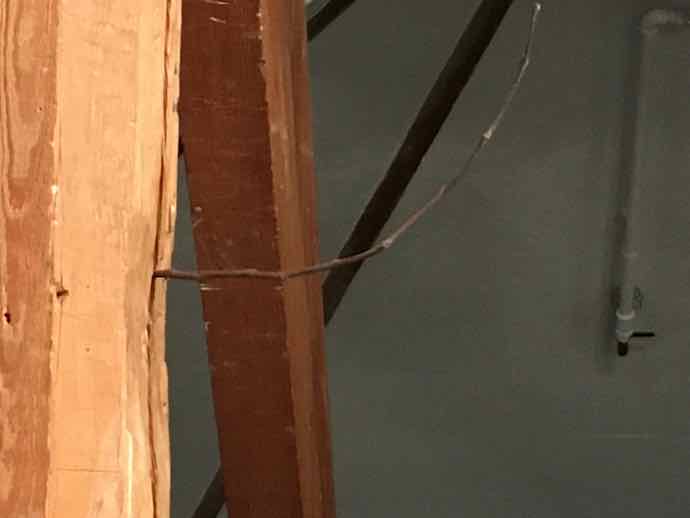
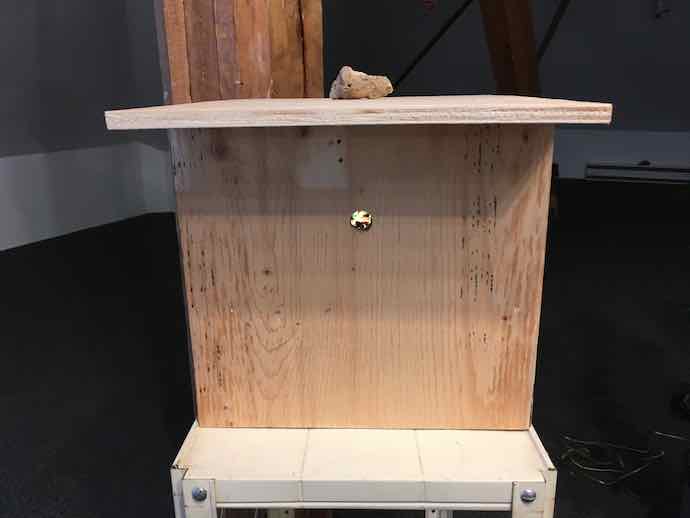
Biographies
Chromogenic Curmudgeons is a duo formed by artists Jean-Jacques Ringuette and Evergon, who live and work in Montréal. They co-author works of contemporary photography.
evergonringuette.com
Through an original approach to ceramics, Amélie Proulx removes the boundary between arts and crafts and the visual arts. Living and working in Lévis, she teaches at Concordia University in Montréal and the Maison des métiers d’art in Québec City.
amelieproulx.com
Joscelyn Gardner is a Caribbean-born Canadian visual artist who works with prints and multimedia installations. She teaches at the Fanshawe College School of Art and Design in London, Ontario, near the rural town where she lives and works.
joscelyngardner.org
Laura St.Pierre is a visual artist working with installations, sculpture, and photography in an ecological perspective. She has an MA in visual arts from Concordia University, and lives and works in Saskatoon.
laurastpierre.com
Multidisciplinary artist Catherine Lescarbeau is doing work articulated around indoor plants and their place in our lives. Working towards a PhD in the study and practice of the arts at UQAM, she lives and works in Gatineau where she teaches at the CEGEP level.
Visual artist Marie-Eve Martel is interested in the role of plants in our built environment, and their impact on our imagination and behaviour. A graduate of UQAM and Concordia University, she lives and works in Blainville.
marieevemartel.com.
Émilie Payeur is a multidisciplinary artist active in the experimental music and visual arts scenes. She holds an MA in composition of electroacoustic music from the Université de Montréal. She lives and works in Montréal.
emiliepayeur.com

